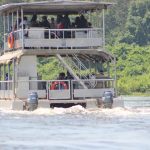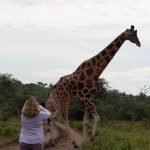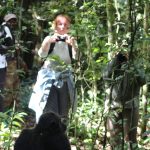Overview
The Equator in Uganda; The Equator is an imaginary line around the middle of the Earth. It is halfway between the North and South Pole at 0 degrees latitude and divides the Earth into the Northern and Southern hemispheres. Interestingly, the Earth is most expansive at its Equator, with a distance of 40,075 kilometres (24,901 miles) around it.
What is more, the diameter of the Earth is also wider at the Equator, creating a phenomenon known as an equatorial bulge. This is indicated by the differences in the measurements at the Equator (12,756 kilometres) and at the poles (12,714 kilometres). Therefore, the Equatorial bulge is 43 kilometres.
Scientists can calculate the diameters of latitudes such as the Equator and Arctic Circle.
What does the Equatorial bulge mean?
The Equatorial bulge means that people standing at sea level near the poles are closer to Earth’s centre than those at sea level near the Equator. Additionally, the bulge affects the ocean, so sea levels are slightly higher in Equatorial regions than near the poles.
Furthermore, the Earth’s gravitational pull is slightly weaker at the Equator, which is still due to its equatorial bulge.
What is the climate like in Equatorial regions?
Twice a year, during the autumn and spring equinoxes, the sun passes directly over the Equator, which means that the regions around the Equator experience a hot climate. The climate remains the same for the rest of the year, with minimal season variations.
Due to the above, many equatorial regions experience two seasons, which include the wet and dry seasons. The wet season lasts for a more significant part of the year. Additionally, these regions tend to have tropical rainforests supported/created by the long warm rainy season. Some of the largest rainforests in the world are found there, for instance, the Congo rainforest of Central Africa and the Amazon rainforest of South America.
How many countries are crossed by the Equator?
The Equator passes through 13 countries in the whole world. These countries include;
- Ecuador
- Brazil
- Colombia
- Sao Tome and Principe
- Gabon, the Republic of the Congo
- Uganda, the Democratic Republic of Congo
- Kenya
- Somalia
- Maldives
- Indonesia
- Kiribati.
The Equator in Uganda
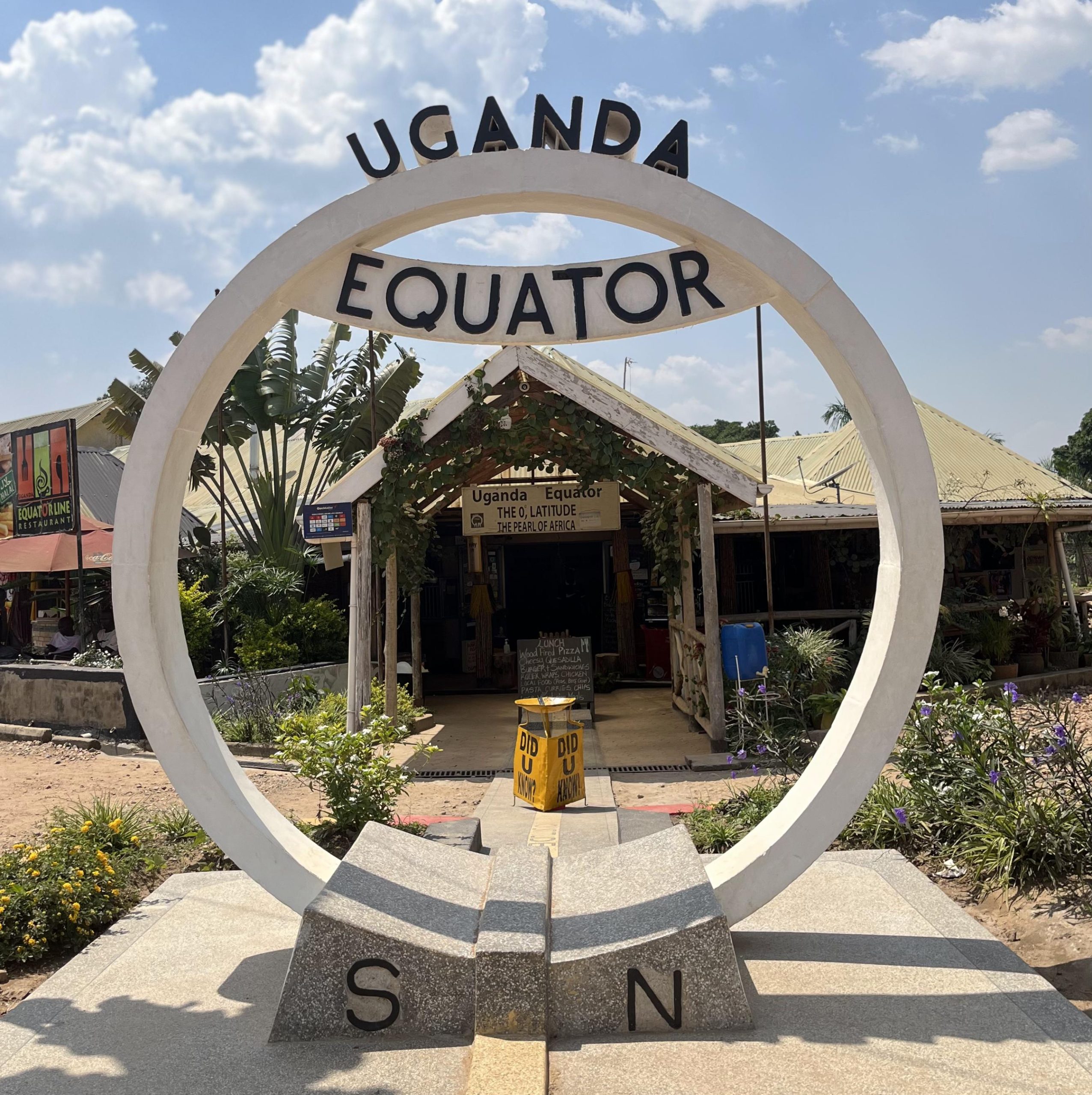
Location
Whereas the Equator crosses through the whole country, the most iconic spot to explore the Equator crossing is in Kayabwe (in the Mpigi district along the Kampala-Masaka road), which is located about 70 kilometres from Kampala (Uganda’s capital city).
It is exciting to stop at this spot for the Equator experience, especially if you travel from/to one of the fascinating national parks in the Western part of Uganda, such as Queen Elizabeth National Park, Bwindi Impenetrable National Park and Lake Mburo National Park.
What is unique about the Equator crossing in Uganda?
Did you know that at the Equator crossing, it is possible to have one of your legs in the Northern hemisphere and the other in the Southern hemisphere?
There are many more wonders about this incredible tourist attraction in the Pearl of Africa. One of them is that the sun rises and sets at a shorter interval at the Equator than in other parts of the world. The other is those areas around the Equator experience a warm climate throughout the year, with a lot of rainfall during the wet season.
We can go on and on, but the fascinating fact is that at the Equator, if you weigh yourself, you will realise that your weight will be less by 0.5%! One may ask, “How is this possible?” The weight change is caused by the earth’s gravitational force being slightly less at the Equator than at the poles.
However, your weight will be average again as soon as you leave.
Souvenir shops and restaurants
Besides being an excellent tourist attraction, the Equator crossing at Kayabwe also offers an opportunity for tourists to buy beautiful handmade products. These include African print clothes, wood carvings, art pieces, jewellery and so on from the souvenir shops. These products can be used for remembrance of the incredible Ugandan safari experience. Additionally, they can keep a memory of a person’s connection with the country’s people and nature. Also, some of these shops were set up by non-government organisations to collect funds for disadvantaged children.
This spot is also suitable for photographing solo travellers and those who would have travelled with their loved ones. After taking photographs and souvenir shopping, you can sit at one of the restaurants there for a delicious meal before continuing your journey.
The water experiment
You will also participate in the water experiment during your visit to the Equator crossing. This experiment demonstrates the effect of the Earth’s rotation on moving objects, also known as the Coriolis effect. You will discover that water at the Equator runs straight down through a plug hole. Then, it runs in the anti-clockwise direction in the Northern hemisphere and the clockwise direction in the Southern hemisphere.
Another exciting experiment, still caused by the same force, is where tourists balance an egg on a nail. The Equator is believed to be the only place to do such an experiment.
What is Equinox?
We cannot talk about the Equator and forget to talk about an incredible astronomical event referred to as Equinox.
This refers to a time of the year when the sun is overhead the Equator, and the lengths of the days and nights are equal. This phenomenon occurs on the 21st of March and 23rd of September every year.
How can I access the Equator in Uganda?
The Equator crossing is located in Kayabwe, Mpigi district. It can be accessed using the Kampala-Masaka-Mbarara highway. The distance from Kampala to Kayabwe is about 70 kilometres by road, which can take about 2 hours. Since this tourist attraction is located along the way to the Western region, it is a suitable stop-over for tourists travelling to national parks located in that region.
One can decide to use public or private means, but we can offer a comprehensive safari vehicle and a professional tour guide for a comfortable safari experience.
COVID-19 and Ebola Travel Guidelines
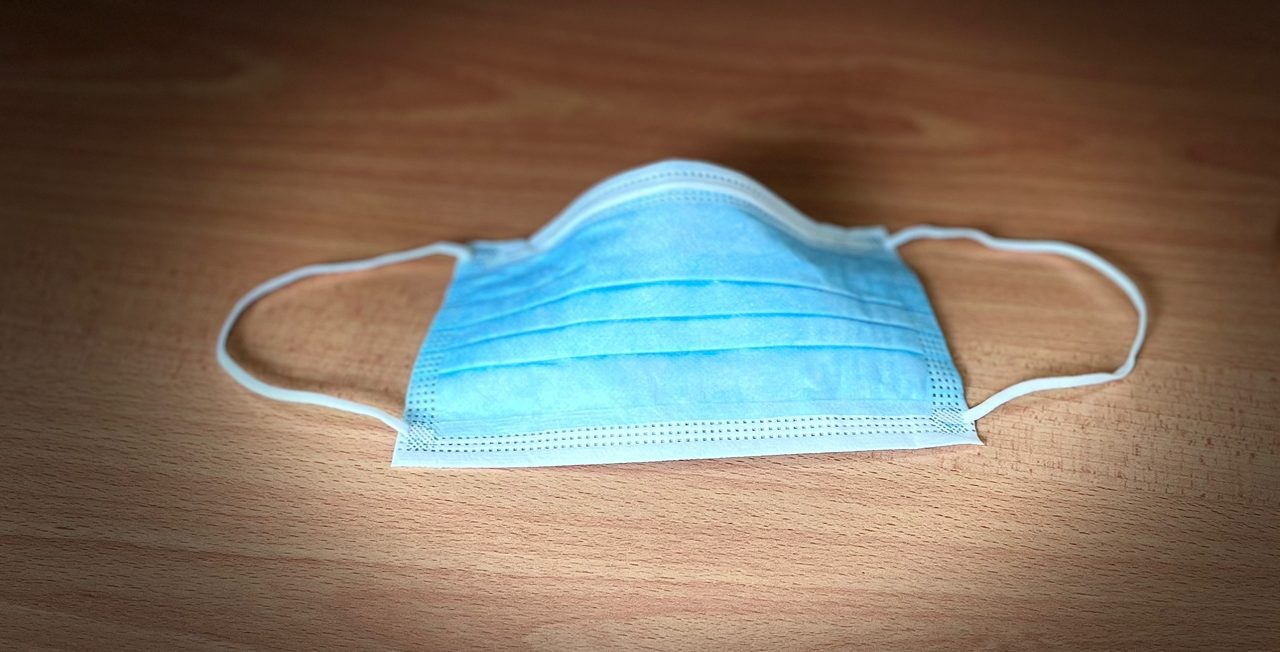
Please follow all the necessary COVID-19 and Ebola travel guidelines to ensure your safety and health during your safari with us. Our primary priority is to provide the best possible security and comfort during your tour. Please don’t worry- you will be in safe hands.
Some travel guidelines include wearing and carrying good surgical masks, moving with an alcohol-based hand sanitiser, vaccination against COVID-19 or taking a PCR test and several others.
Conclusion
Visiting the Equator in Uganda is a spectacular adventure that can make your safari memorable. With that said, please don’t hesitate to contact us and forward any questions or questions or even suggestions about your upcoming safari. We shall be delighted to hear from you. Don’t miss out on a beautiful opportunity to explore East Africa with us; let us turn your safari dream into an everlasting memory! Make your safari booking today.

